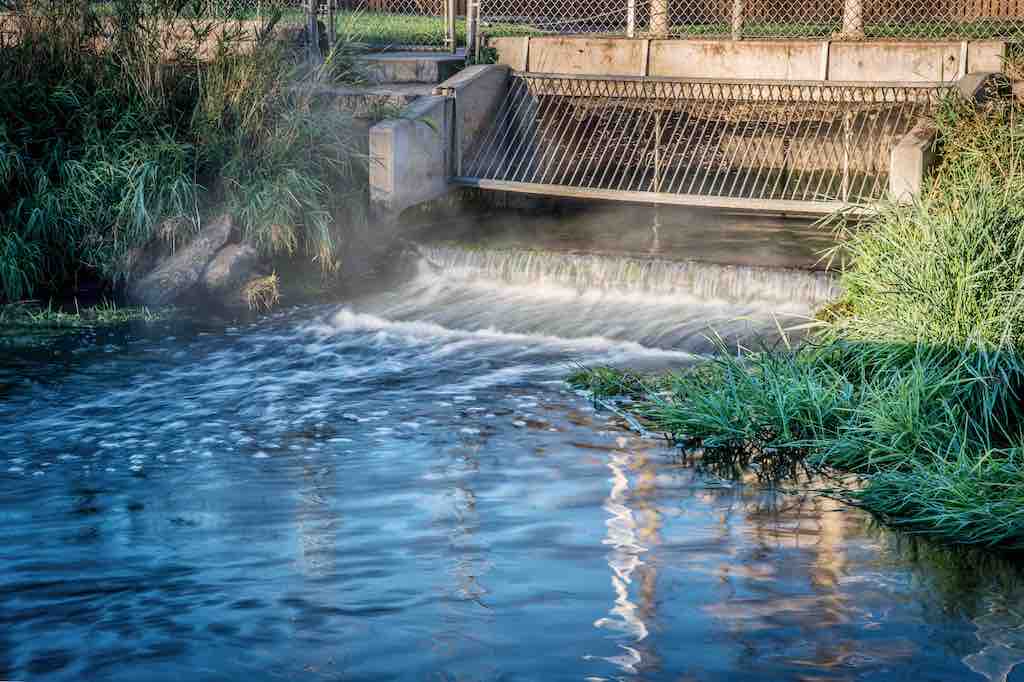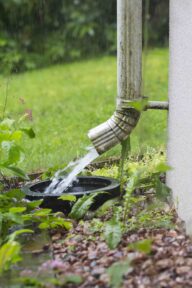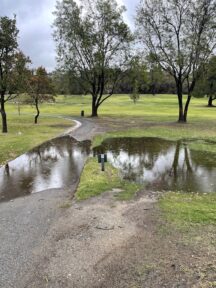As we promised, in the next installment of Stephen’s guest post, “Golf Course Soil Salinity is One Piece of an Urgent Global Problem,” we’re revealing how a water-hungry golf course got built in an area so challenged by water issues, how Stephen deals with using reclaimed water for the golf course, increased soil salinity, and what we can do to conserve water, and how global drought conditions and soil degradation are precursors to desertification — a word we should be very scared of.
A Little Back Story
So how and why did LCF Country Club get built? Believe it or not, the town of La Cañada Flintridge lacked a modern sewer system until 1998 – all true! According to The History of La Cañada by Don Mazen, the “great La Cañada sewer debate unfolded way back in 1957 when the community was still unincorporated.” Various opposing committees were formed, surveys, studies, and petitions came and went over the years. Residents rejected formation of a sanitation district and contented themselves with “onsite systems,” such as septic tanks, cesspools, and leach lines. A bond measure was voted down in 1968, but the city finally voted for and got its trunk line along Foothill Boulevard– and a sewage system to serve the country club and residential areas was constructed and completed in April of 1997.
Necessity is the Mother of Invention

Left: Bill Godbey, original developer of LCF Country Club and surrounding homes and wife with (Right) Evelyn and Gil Dreyfuss . Unknown woman center.
The story Gilbert Dreyfuss was told by the original developer of the La Cañada Flintridge Country Club, Bill Godbey, was that he, Godbey, was approved to develop 100 homes and 127 garden-style apartments in the foothills, but there was an “if.” That if: If he could find a use for the effluent water discharged by the homes above the tract. This was in 1959-1960. They were looking for a use for 200,000 gallons of wastewater per day, servicing 425 homes.
What to do with 200,000 Gallons of Wastewater Per Day?
Hmm, what to do, what to do? Industrial use? Not an ideal town for industrial uses. Commercial cooling? Hmm? Irrigation? Irrigation! Bingo. But irrigation to use 200,000 gallons of “reclaimed water?” Let’s see, a park? Cemetery? Nah. Nope. How about a golf course? Good idea! Necessity is the mother of invention, in this case.
Recycled Water then and Now
As it turns out, here from the 2021 perspective, reclaimed water use, rainwater harvesting, green infrastructure (simple swales or ditches), greywater reuse from households, and diverting rain from stormwater channels, are all important pieces of water conservation today. The extreme drought conditions, stresses on farmers, drying up of rivers (did you see the salmon being trucked by the California Department of Fish and Wildlife on the news last summer?) and poor water regulation ethics and inequitable distribution of water rights make these reuse of water technologies incredibly important today. Today, Nationwide, approximately 13% of golf courses use recycled water for irrigation.
The Interview with Stephen Garritson, Superintendent, Continues
Pamela: So, Stephen, what do you do to mitigate the salinity caused by drought and by irrigating with highly saline reclaimed water?
Stephen: When the drought gets really bad, we’re forced to use potable water to flush our greens. Thankfully, we got a few inches of rain yesterday.
Pamela: Yes! Randy and I came to the club for a nice rain walk. We enjoyed the beauty of the course, the wildlife, and walked around the back nine. We noted and documented the areas that were flooding and pooling water, the greywater “buckets” of rain coming off the clubhouse building, and the gushing rainwater being wasted as it runs into the toxic stormwater drains and is emptied eventually into the sea. We’re beginning to look at increased water reclamation on the property by capturing greywater (rooftop catchment), and rainwater harvesting with natural swales or berm ‘n basins, or earthworks. So much fresh, useable water is lost to the government drainage system of storm drains. By harvesting and reusing the water, we are recharging the groundwater. Even our downspouts from our homes are designed to “throw away” this perfectly useable greywater by directing it into the streets!
Stephen: Yes, water conservation is important for everyone, from the club, to farmers, to policy decision makers and voters. High levels of salinity in water reduce crop yields, and at higher concentrations, it kills trees and makes the land unusable for agriculture. It’s estimated that 10-20% of drylands (drylands are about 40% of earth) are desertified. Salinization leads to irreversible desertification — changing fertile lands to deserts.
Hopefully I was able to shed some light on this issue. As an agronomist in the West, I have been dealing with this for years, but this year, 2021, is different. Our salt measurements have been 3 times higher than any year before and without much more significant rain there is no end in sight. I hope that our readers will begin to become more aware and take actions to bring sustainability practices for water and the planet into their lives.

Photo of Course Superintendent, Stephen Garritson
Pamela: Thanks, Stephen. This conversation is making me thirsty for some reason. Looking forward to revisiting this topic as we make progress on our rainwater capture plans. First step, altering our home’s downspouts! Thanks for reading this blog post.
Afterthought, or “afterinfo.”
I was recently given Bill Godbey’s self-published — in 2001 — memoir, The Life and Times of William Houston Godbey. Aside from learning that Mr. Godbey served in the Air Force during WWll, and that he was an all American football star at John Marshall High School, I also learned that as soon as he started his Enchanted Estates development, an epic size January flood came and washed away a hillside and flooded Gould Avenue with debris, even “tearing up the streets.” Because of that mishap, he says, the project got a bad name and he “was forced to put in a major storm drain.” Makes sense to me, and I for one, am glad he was made to do so. Godbey then decided that building a golf course would solve his problems and make his spectacular home developments more valuable. I’m sure he was right about that since we know that many of our neighbors enjoy the grand views from their hilltop homes. What surprised me, however, was that there was no mention of the golf course being built to use the recycled water from the homes above. Go figure. As I mentioned, the story was passed along as “oral history,” and may or may not be the whole story…
Did You Know?
Measure W, also known as the Safe and Clean Water Program, passed in 2018, is a tax on LA County parcels within the flood control district (just about everyone) that taxes your home or business at a rate of 2.5 cents per square foot of “impermeable area” (i.e., paved or built-on surfaces that that prevent “stormwater and urban runoff from entering the earth”), like concrete patios and driveways.
The Measure’s money:
- Strengthens the county’s capacity to improve water quality and increase water supplies, effectively prepare for emergent environmental and natural hazards, and addresses the threat of climate change,” county documents say.
- Urban runoff is a significant source of water pollution. By capturing and treating stormwater, the county reduces that type of pollution.
- The tax helps the county use to its advantage billions of gallons of water that would otherwise just run into the ocean.
- The tax created a funding source for stormwater cleanup required by federal law
Resources to Learn More About Water
- Watershed Maps and Nature for All Org.
- A Great Book/Resource for Applying Rainwater Harvesting Anywhere by Brad Lancaster
- Regional Water Quality Control Board – Los Angeles
- State Water Resources Control Board
- U.S. Environmental Protection Agency
- LA County Stormwater
- California State Coastal Conservancy
- Heal the Bay
- City of LCF Public Works Stormwater Management
- The CA water system explained
- The LCF Country Club’s Reclamation Plant
- 5 Ways Residents in LA County Can Collect Rainwater
- Permaculture Ecological Design Movement and Water Use





Yes!!!!
allaniludwig@yahoo.com